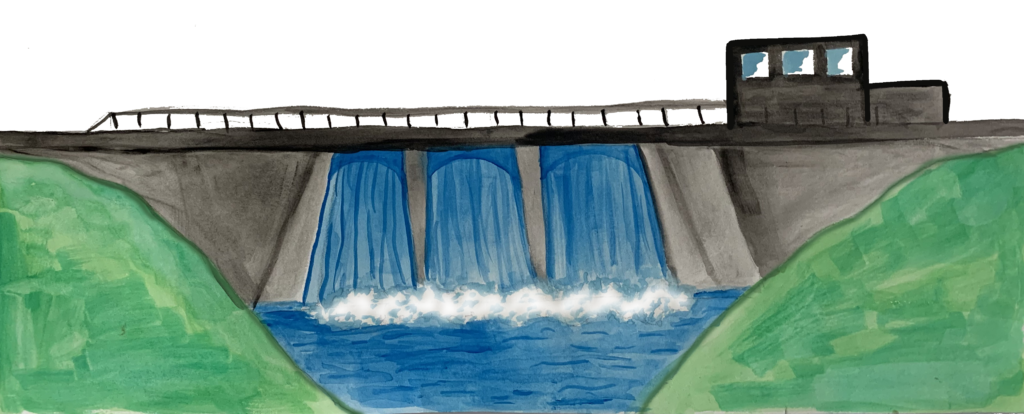There is…an enormous reservoir of relatively untapped genius–that is, the capacity for exceptional accomplishment–which existing systems of motivation have failed to reach.” – Saul Gellerman, Management by Motivation (1968, page 204)
In June 2015 in London at what is lovingly called Gilbfest, I had the privilege to give a presentation based on my work with Driving Change over the past 10 years. The presentation was titled, “Building an Innovation Implementation System within a Large Organization.”
An innovation implementation system would:
- shrink the time between idea launch to full implementation
- create a growing number of observable, successful implementations each year
- reduce the distance (real and figurative) between people in the organization
- increase the number of proven leaders of organizational change.

The innovation implementation system was based on organizational physics that mirrors the physics of a hydroelectric system of river, dam, transmission, and industry.
Like potential energy stored in falling water, people in organizations have an inherent capacity for creating innovations. You don’t have to add innovative people, thoughts, or behaviors to get the process started.
These innovations (which start as single ideas or inventions) flow whether the organization harnesses them or not. Hence, it is to an organization’s benefit to install an innovation implementation system as soon as possible. Every day that passes innovative ideas flow out of your organization without producing a benefit for you.
The implementation breaks into a few steps.
- A Reservoir Step: How to Collect Innovative Ideas
- A Power Generation Step: How to Harness Urgency
- A Transmission Step: How to Connect Innovations with the Organization and Beyond
- A Results Step: How to Create Sustainable Power and Results
The Reservoir Step is to simply ask for ideas AND volunteers to implement the ideas. Ideas without volunteers lack potential energy. It is only when an idea is embodied in a person within the organization that the idea can be funneled into power generation and transferred energetically downstream.
The Power Generation Step is propelled by volunteers who carry forward their ideas by driving change, not people. They don’t demand others do what they won’t. Instead, the volunteers invest their time in modeling the change, sharing what they’ve learned, and removing the obstacles for others to follow them.

The Transmission Step links the hierarchy of the organization with the network of volunteers, using the energy of both the hierarchy and the network to accelerate the idea forward. As John Kotter expertly explains in Accelerate, it is hierarchy AND network, rather than the traditional hierarchy OR network battle that allows organizations to benefit the most.
The Results Step demands sustainment (defined as the ability for the idea to continue without injection of new energy from the original idea volunteer) as the measure of final results. Too often launching an idea is considered the end point, and all of the work up until that point is like a spark at the end of a frayed electrical line–light and heat accomplishing nothing. This can be prevented through a commitment to partner with the downstream benefactors until the innovation can stand on its own.
As in a hydroelectric system, there is much engineering behind each of these steps, but these four steps are a complete outline of a working innovation implementation system that that I’ve built, run, and benefited from many times.
If this outline intrigues you and you’d like the detailed schematics of the innovation implementation system, feel free to reach out to me. Together we can harness the reservoirs of untapped genius in our organizations.

